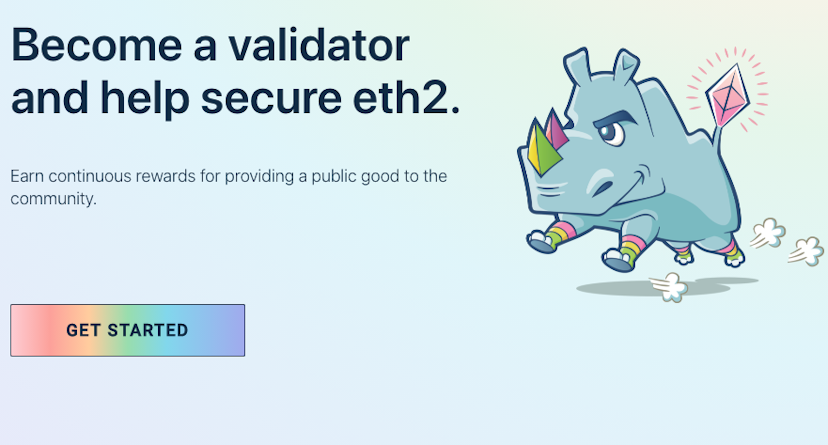Risks and Rewards of Becoming an Eth2 Validator
The deposit contract for Ethereum’s new proof-of-stake chain was released today. If ~524k ETH is deposited this month, the new chain will go live on Dec.1. Potential rewards for contributing to that pile of ETH are enticing, but as is usually the case with high returns, there’s also high risk. So far, 5.7K ETH from…
By: Camila Russo • Loading...
DeFi
The deposit contract for Ethereum’s new proof-of-stake chain was released today. If ~524k ETH is deposited this month, the new chain will go live on Dec.1. Potential rewards for contributing to that pile of ETH are enticing, but as is usually the case with high returns, there’s also high risk.
So far, 5.7K ETH from 467 depositors has been sent to the contract, according to data by Dune Analytics.
Serenity Now
The launch of the PoS chain is Phase 0 in Ethereum’s transition to an upgrade known as Serenity or Ethereum 2.0. This matters to DeFi: Ethereum is effectively the base layer for this open economy and it has struggled to keep up with the ecosystem’s explosive growth. Eth2 is meant to support the traffic required for Ethereum to achieve its original goal of being a “world computer,” and today’s release marks an important step in that direction.
? Proof of Stake is a consensus mechanism, like proof of work. It’s the system used among the participants of a distributed network to confirm transactions. Proof of work relies on the electrical power miners use, while Proof of stake relies on the amount of the network’s native tokens deposited (or “staked”) by validators. Miners and validators get token rewarded for dedicating their computing and economic power, respectively, to the network.?
The release isn’t symbolic: DeFi traders can now stake their ETH and become validators in the network to earn token rewards.
What stakers get:
- A return on their ETH. Initial yields will be 15% – 20% when staked ETH is less than 1M ETH, and will gradually decrease to 7% as the stake rate approaches 5M, according to Staked.
- A digital receipt that tells the network you’re a validator, known as Beacon Ether, or BETH. This is not a distinct token, but there’s speculation it will be traded in secondary markets.
- A non-fungible token from the POAP team, that proves you were an early Ethereum validator.
- Directly contributing to the strength of Ethereum 2.0.
The risks for stakers:
- They won’t be able to withdraw their staked ETH or rewards until transfers are enabled on an unknown date that’s likely at least two years from now.
- They’re penalized or “slashed” if they act maliciously and they lose staked ETH in proportion to their damage to the network.
- Validators can also lose a small amount of ETH (equal to the rewards for participating) if their node goes offline, or what’s known as “leakage.”
- There is the potential for software bugs which could result in lost funds.
How to stake:
You can stake ETH directly to the contract and hold the private keys to the validator, or use staking-as-a-service platforms, like Rocketpool and Staked.
Rocketpool, which is in beta, will allow users to stake as little as 0.01 ETH. Deposits receive rETH tokens which represents the capital staked and its rewards and can be traded immediately.
Staked is live and requires users to stake ETH in multiples of 32 (as is the case when staking directly to the contract). It offers an interface to monitor Eth2 nodes and is distributed across cloud and Eth2 clients to prevent penalties. Yield for staking via Staked is currently 12.4%
Advertisement
Get the best of The Defiant directly in your inbox 💌
Know what matters in Web3 with The Defiant Daily newsletter, every weekday
90k+ investors informed every day. Unsubscribe anytime.